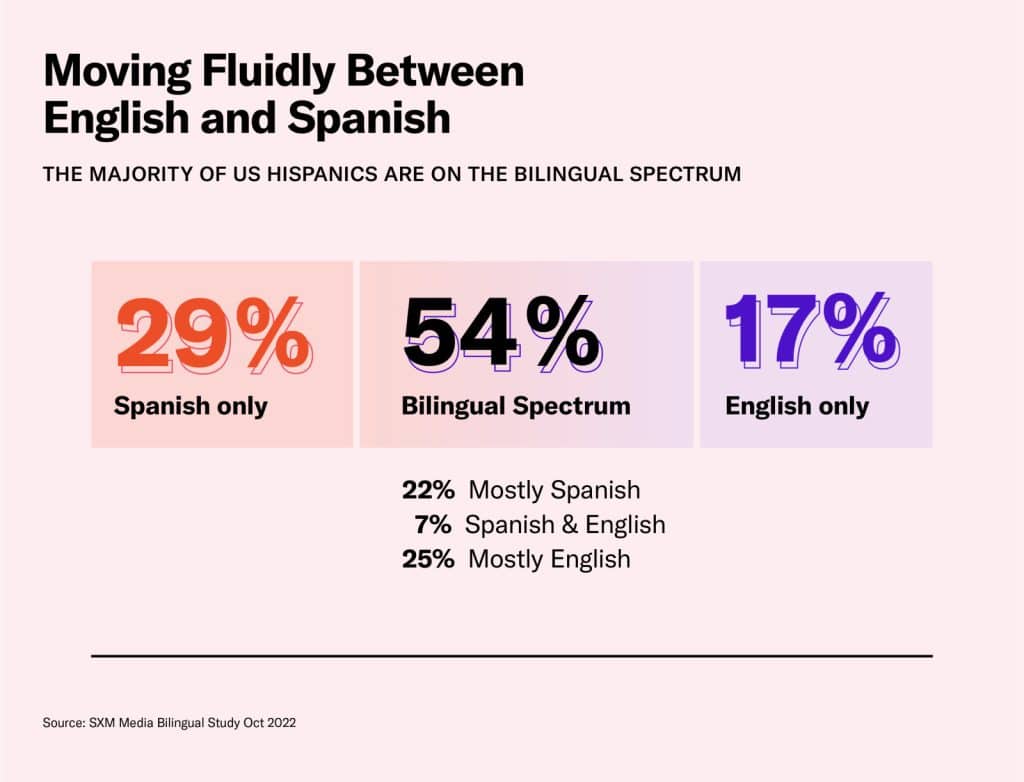Close your eyes and picture a bustling street in the heart of a vibrant American city. The aroma of sizzling tacos fills the air while lively music echoes from every corner. As you open your eyes, you realize that you are standing at the epicenter of the Hispanic community in the United States – a rich tapestry of diversity that we are about to explore.
The Hispanic or Latino population in the U.S. is a diverse and dynamic community composed of individuals from various countries, backgrounds, and experiences. To truly understand its intricacies, we must delve into the multifaceted aspects that contribute to its richness. So, grab a cup of cafecito, and let’s embark on this journey together.
Hispanic Market Diversity
At the heart of the Hispanic community’s diversity lies its incredible variety of national origins. While many assume that the term “Hispanic” solely refers to individuals of Mexican descent, the reality is far more vibrant. In fact, Hispanics hail from many countries, including but not limited to Mexico, Puerto Rico, Cuba, the Dominican Republic, and Central and South American nations. Each group brings its own unique cultural heritage, language, and traditions, creating a vibrant mosaic within the broader Hispanic identity.
To truly understand the dynamic nature of the Hispanic community, let’s take a closer look at some data-driven insights and analysis. According to the Pew Research Center, as of 2020, the Hispanic population in the U.S. reached a new high of 62 million individuals, making it the second-largest racial or ethnic group in the country. This staggering number highlights Hispanics’ significant influence and impact on American society.
Now, let’s put these numbers into perspective using a relatable example. Imagine a baseball stadium filled with passionate fans, each donning the colors and insignias of their favorite teams. The Hispanic community is like a major league team, contributing to the richness and diversity of the American cultural landscape. Their growing numbers and vibrant presence shape this great nation’s socioeconomic and cultural fabric.
As we immerse ourselves further, another critical aspect emerges: language. It’s no secret that Spanish, with its melodic tones and poetic expressions, is a common thread that binds the Hispanic community together. According to a Pew Research Center report, nearly 81% of Hispanics aged five years or older spoke Spanish at home. However, it’s also crucial to recognize the linguistic diversity within this community. While some Hispanics are fluent in both English and Spanish, others speak indigenous languages from their countries of origin. This linguistic diversity is a testament to the varied journeys that have brought each individual to the United States.
Imagine walking through a lively marketplace filled with various voices from different languages. This analogy captures the linguistic tapestry of the Hispanic community—an orchestra of languages interweaving with the English language, enriching the cultural symphony of the United States.
However, diversity within the Hispanic community extends beyond national origin and language. Understanding the diverse socioeconomic backgrounds that shape the experiences and aspirations of individuals within this community is crucial. Historically, Hispanics have faced unique challenges in education, employment, and access to resources.
Although, there is a silver lining, as the Hispanic community has been making significant strides in narrowing these gaps. For instance, the Hispanic high school dropout rate has steadily declined over the past decade while college enrollment rates have increased. These statistics illuminate the resilience and determination of Hispanic individuals and families who strive for upward mobility and a better future for themselves and their loved ones.
As we delve deeper into the intricate layers of the Hispanic community, it becomes clear that its diversity is its strength. It is not merely a monolithic bloc but a vibrant mosaic of cultures, languages, and experiences. Hispanics are entrepreneurs, healthcare workers, artists, scientists, etc.
Just as each thread is essential for creating a beautiful tapestry, every individual within the Hispanic community contributes to the vibrant fabric of American society. Their traditions, customs, and resilience remind us of the power of diversity and the importance of embracing the various colors that fill our nation’s rich tapestry.
Hispanic Market Trends
The Hispanic market is a dynamic and influential segment, and there are several trends that are shaping its landscape. Here are some critical Hispanic market trends:
Population Growth: The Hispanic population in the United States is growing rapidly, contributing significantly to overall population growth. This demographic shift has a substantial impact on consumer behavior and market demands. The U.S. Hispanic population reached 63.6 million in 2022, up from 50.5 million in 2010. The 26% increase in the Hispanic population was faster than the nation’s 8% growth rate but slower than the 34% increase in the Asian population.
Digital Engagement: Hispanics, whose average age is just 27, are avid users of digital media, social platforms, and mobile devices. Companies are increasingly focusing on digital marketing strategies to connect with this audience. Regarding social media usage, Hispanics in the U.S. are leading the way. An impressive 86% of Hispanic adults aged 18 and above actively use social media. At 60%, Facebook is the leading platform among Hispanics. Then, Youtube 58%, Instagram 48%, TikTok 34% and Snapchat 19%. It’s remarkable that for them, social media is a powerful tool for staying connected, informed, and engaged with causes and brands they hold close to their hearts.
Cultural Relevance: Brands recognize the importance of cultural relevance in their marketing efforts. Cultural insights and understanding are crucial in creating campaigns that resonate with the Hispanic community. Firstly, you need to acknowledge the values and motivations that drive this vibrant and diverse community: Family as a Central Pillar, Traditions and Time-honored practices; the Influence of Religion, the Importance of Language & the Role of Storytelling, the Tech-Savvy Nature of Hispanic American Consumers. You need to take into account some best practices for crafting successful marketing campaigns that can leave a lasting impact on the Hispanic community:
a) Incorporate cultural values in campaign messaging;
b) Use language, imagery, and themes that reflect Hispanic culture;
c) Showcase the Importance of family and tradition in marketing materials;
d) Create authentic and culturally sensitive content;
e) Engage with Hispanic content creators;
f) Navigate regional differences and diversity;
g) Optimize campaigns for mobile platforms considering high smartphone usage and
h) Use social media platforms popular among Hispanic audiences for sharing cultural content. (To learn more, download MediaCulture’s U.S. Hispanic Market Audience Insights Report.)
Bilingual Marketing: Many Hispanics are bilingual, and brands are adapting their marketing strategies to communicate effectively in both English and Spanish. This helps in reaching a broader audience within the Hispanic community. Bilingualism is no longer an either/or. It is a diverse spectrum, connecting with culture every step of the way. Over half (54%) of the US Hispanic population is somewhere on the bilingual spectrum..
.

Source: SXM Media Bilingual Study
.
Economic Influence: The purchasing power of the Hispanic market is significant and continues to grow. Companies are recognizing the economic influence of this demographic and tailoring their products and services accordingly. U.S. Latino purchasing power is measured at $3.2 trillion and is expected only to grow.
Health and Wellness: There is a growing interest in health and wellness within the Hispanic community. Brands are responding by offering products and services that align with healthy lifestyles. However, they should avoid the easy path: Hispanics feel they are on the right track in multiple areas. More than three in five feel they are paying attention to their mental health, while less than three consider exercising regularly and following a healthy diet. Looking for ways to improve their health and wellness may not happen naturally. Moreover, most Hispanics who are not doing these things yet plan to start working on them soon. While intentions are positive, these Hispanic consumers may need triggers to move ahead.
Influencer Marketing: Leveraging Hispanic influencers is becoming a popular strategy for brands to connect with the community. Authentic voices that resonate with the audience can powerfully shape consumer preferences. Latino influencers have an authentic voice that resonates with their community. They are seen as trustworthy sources of information and trendsetters. Brands that partner with these influencers can tap into their loyal following, creating a more personal and effective marketing strategy.
Cultural Celebrations: Brands participate in and celebrate cultural events and holidays significant to the Hispanic community. This shows an appreciation for diversity and strengthens brand connections. In recent years, many U.S. consumer brands have launched Hispanic Heritage Month campaigns. This (and other celebrations too) is an excellent opportunity to show your support, but there are several key considerations to keep in mind before executing a campaign:
1) Authenticity is critical;
2) Recognize diversity within the community;
3) Latino vs. Hispanic vs. Latinx; and
4) Advocate.
Mobile Commerce: Mobile devices play a crucial role in the shopping habits of Hispanics. E-commerce and mobile commerce strategies are essential for brands looking to tap into this market. According to a Pew Research analysis, 86% of Latinos say they own a cellphone, and 49% are likely to have a smartphone. Latino internet users are more likely than white internet users to say they go online using a mobile device—76% versus 60%.
Family-Centric Values: Hispanic culture places a strong emphasis on family. Marketing campaigns that highlight family values and connections tend to resonate well with this audience. Hispanic culture significantly emphasizes close-knit family ties, and marketing strategies should reflect and celebrate these values. Highlighting family-oriented themes, such as gatherings, traditions, and shared experiences, can resonate well with the Hispanic audience.
It’s important to note that these trends may evolve, and staying informed about the changing dynamics of the Hispanic market is critical for businesses looking to engage with this demographic.


0 Comments